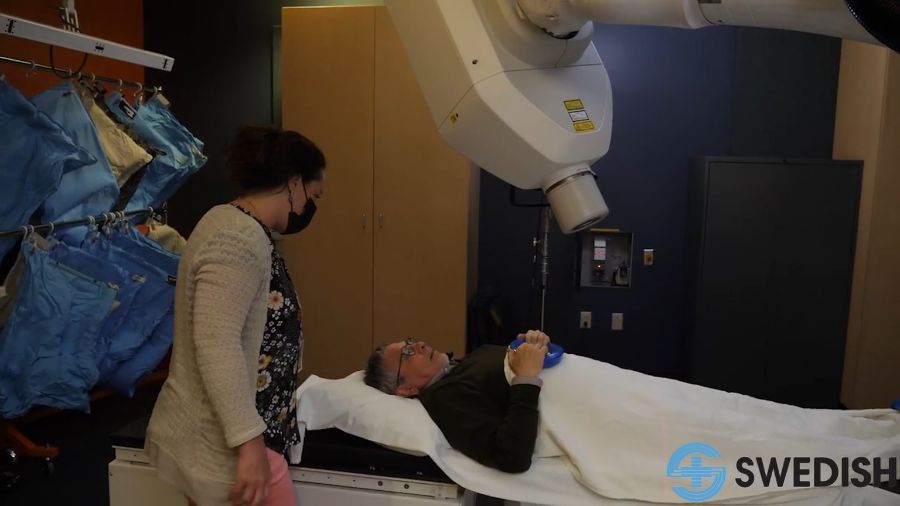Rantz: Seattle will waste federal funds tackling drug crisis it created
Nov 15, 2023, 6:35 PM | Updated: 6:39 pm

(Photo: The Jason Rantz Show)
(Photo: The Jason Rantz Show)
Seattle Mayor Bruce Harrell is joining nearly 40 other mayors asking Congress to pass President Joe Biden’s supplemental funding request. Many of these mayors shouldn’t be trusted with these funds.
Included in the funding is $1.5 billion in grants to cities through the federal government. Harrell and others want the fund to tackle the fentanyl crisis. Much of the money, at least on paper, sounds like it would go to worthy causes. It would fund opioid use disorder treatment and recovery support services.
It might sound like a worthy request from Harrell. But many of these mayors making the ask are responsible for the crisis in their cities. And a key piece of the spending plan would go to a failed strategy that actually enables drug addicts instead of treating them.
More on Rantz: Burien voters rejected Seattle homelessness extremism and politicians
These mayors helped create the drug crisis
Many of the mayors that signed the letter were in office as the fentanyl crisis worsened, like mayors Ted Wheeler of Portland, London Breed of San Francisco, Tishaura Jones of St. Louis, Jim Kenney of Philadelphia, and Muriel Bowser of D.C.
These mayors (and their councils and, in some cases, state legislatures) pursued and adopted radical policies and legislation that allowed the fentanyl crisis to hit historic records. We saw defunded police, effectively legalized drugs by refusing to enforce drug laws, prosecutors go easy on those that did end up getting arrested, and similarly permissive homeless policies. Then-mayor Jenny Durkan led Seattle through this same extremist lens, pursuing destructive policies.
Why should Congress assume these people, or their like-minded predecessors, could spend their way out of the mess? Their ideology informs their policies. Their ideologies haven’t changed — that will inform how the money is spent.
In fact, there’s one giant red flag in the funding request to Congress and reason enough to reject it until it’s addressed.
Harm reduction does the opposite of reducing harm
The budget request would fund “harm reduction” strategies. As is always the case, the mayor’s letter packages the strategy with identical language to make the strategy seem like it works. They always call it “evidence-based harm reduction services.” The evidence isn’t there.
Harm reduction is a strategy for mitigating the risk of harm associated with illicit drug use. Proponents, at one point, focused their advocacy on promises it would lead to and fund treatment for addiction.
Proponents have mostly stopped lying to the public and lawmakers who fund their programs, admitting this is about enabling the drug user, not treating their addiction. It’s why they use the funds to purchase fentanyl smoking kits, crack pipes, clean needles, and booty-bumping kits.
More from Rantz: Port of Seattle puts tampons in men’s bathrooms, even before women’s
We know how the money is being spent
During a council committee hearing in May, Seattle City Councilwoman Sara Nelson questioned a group of public health workers that the city funds to tackle the fentanyl crisis. She justly questioned the harm reduction model.
“I would like to know what is the harm that’s being reduced by the distribution of supplies that simply help people to use drugs?” Nelson asked the panel of harm reduction advocates.
Brad Feingold, a strategic advisor for Public Health Seattle-King County, argued that handing out smoking supplies ends up bringing addicts in for “treatment,” which he said includes connecting them with case managers. Nelson asked how many were coming in for that purpose, but Feingold could not provide an answer.
Amber Tejada with the Hepatitis Education Project responded, then added that it’s not about getting addicts off their drugs. They seek to “facilitate and champion” drug use under the belief that addicts should be free to continue use.
“I know it can be a little controversial, but one of the key tenets of harm reduction, that I see, is that we want to be able to facilitate and champion autonomy of people who use drugs,” Tejada said. “And so, you know, there are folks who don’t want to stop using drugs. There are folks for whom abstinence is not something by which they measure their success in life.”
“So, you know, like Brad [Feingold] said, people come in, they get safer smoking supplies,” she continued. “They don’t have to inject if they’re smoking. Our friends at People’s Harm Reduction Alliance invented a whole new pipe so that people could smoke and not inject, which is proven to be a safer method of using drugs. So, I mean, abstinence is great if that’s something that you have planned for you. But sometimes people are just going to use drugs and it’s not going to lead to abstinence. And I think our mission and I think what we’ve been able to do really successfully with this program is to show that people can use drugs safely.”
Since the hearing, the county has reached another historic high number of fatal overdoses.
Congress must be weary
Harrell wasn’t mayor when radical anti-police and pro-drug policies were enacted that helped create the crisis. But he does endorse harm reduction strategies. That should disqualify the city from funding.
Harm reduction simply does not work, but progressives rush to be in the vanguard of a public health revolution in tackling the crisis. In doing so, they adopted and continue to promote policies that worsen the problem. Giving them money to tackle the crisis will only create a never-ending cycle of dependency on federal funding. Democrat mayors will get the money, pour it into harm reduction, the crisis will get worse, and they’ll be back asking for money — just more of it.
Under Biden, thanks to a porous border, fentanyl has flooded our streets. The federal government was a part of creating the crisis, so it should offer some funding to localities. But the money must be spent responsibly and effectively. If the funding must specifically go to treatment centers, it’s a worthy cause that should be adopted. The amount of treatment cities need is costly. But Congress should think twice before handing over tax dollars to Democrats who refuse to disavow the deadly harm reduction strategies.
More from Max Gross: Skagit County animal sanctuary facing shutdown over permits
Listen to The Jason Rantz Show on weekday afternoons from 3-7 p.m. on KTTH 770 AM (HD Radio 97.3 FM HD-Channel 3). Subscribe to the podcast. Follow him on X, formerly known as Twitter, Instagram, and Facebook. Check back frequently for more news and analysis.














